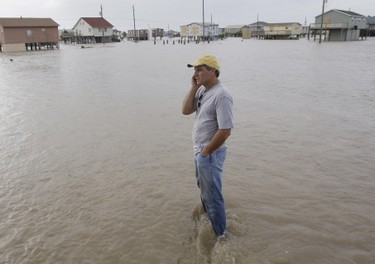 The only place to go for real time live updates back in 1992 when Hurricane Andrew caused chaos throughout South Florida was TV and radio – if you were lucky enough to still have power. Indeed, weather man Bryan Norcross became a local legend after he provided live updates associated with Hurricane Andrew for 23 hours.
The only place to go for real time live updates back in 1992 when Hurricane Andrew caused chaos throughout South Florida was TV and radio – if you were lucky enough to still have power. Indeed, weather man Bryan Norcross became a local legend after he provided live updates associated with Hurricane Andrew for 23 hours.
Today, our society has become very dependent on technology. We often turn to our cell phones, smart phones, tablets, laptops, desktops, and other such devices to find out the latest news, current events, and other pertinent information. Therefore, it stands to reason that if a hurricane were to strike South Florida that we would all turn to our many devices for the latest news and information.
But what happens if your primary source for information is your iphone but your iphone is dead and there is no place to re-charge it? That is a primary concern for many as hurricane season gets under say.
All that reliance on technology begs the question whether or not our infrastructure is set up to handle all that demand should a storm strike South Florida. To handle that load, wireless carriers are turning to time-tested disaster plans – but on an exponential scale.
But will it be enough to handle the 600,000 South Florida households without land lines, plus the seemingly endless appetite to Tweet, Facebook and upload video of the broken trees, gasoline lines, and broken roadways? No one will know for sure until storm hits.
However, the ravaging storms, and tornadoes, that ripped through the Midwest earlier this year provided a sneak preview of what we can expect here in South Florida should a hurricane strike us.
In that part of the country, Facebook became a critical channel to finding lost family members and asking for help. Moreover, with Internet connections down for several days, many in that part of the country turned to wireless telephones for news. Many more also turned to Twitter to spread the word of where to find supplies and emergency stations. The tweets involving emergency stations even included areas where folks could recharge their wireless devices, including cell phones.
It should also be noted that with hurricane season upon us, and should a hurricane strike South Florida, many South Floridians will turn to many new apps for purposes of both tracking the storm and dealing with the storm’s aftermath. But that obviously means that many of us will rely on technology more so today than we did in years past. In fact, cell phones are often times the only form of communication immediately after a hurricane strikes.
To prepare for that anticipated heavy usage, major wireless carriers say they have tested equipment and run simulations in South Florida. But while all the wireless carriers state that they are prepared in the event that a major hurricane strikes South Florida, only time will truly tell.
Nonetheless, and in the event that a major hurricane does strike South Florida, the best advice that the major carriers offer is to use your wireless technology sparingly and only when necessary.
Simply put, go ahead and post something short on Facebook or Twitter send a text message, and then get off the phone. And don’t hesitate to contact us if your property is damaged.
—–
EXTENDED BODY:
Consider Your Options. Contact Us Today.
Before opening our law firm in 2006, our attorneys worked for some of the state’s, and nation’s, largest law firms, and worked representing the insurance companies for years. Our attorneys are now uniquely positioned to use that experience to assist individuals and businesses alike throughout Florida with their insurance claims. As a result, our attorneys are well versed in the impact insurance has on businesses, condominiums, and individuals alike. Our insurance litigation practice group is prepared to tackle your insurance claim.
Given our extensive experience litigating for, and against, insurance companies, our insurance litigation practice group is prepared to provide aggressive, efficient and effective representation on a broad spectrum of insurance claims in Florida for local, national, and international clients. We are prepared to advocate insurance claims at the pre-suit stage, trial, appellate and arbitration levels.
If you are facing a dispute over an insurance claim in Florida, contact Alvarez & Barbara, LLP, for a free and confidential consultation to discuss your rights.
Call us today toll free at 1-866-518-2913 or at 305-263-7700.